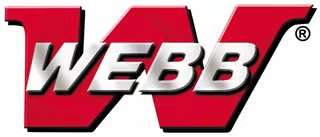Title Page
-
Location of work instruction:
-
Prepared by:
-
Date of the Inspection
-
Read work instructions
-
Mark items accordingly if they have been "Completed" or "Incomplete"
Lathes
-
Select correct part program
-
Orientation of drum effects on balancer (rough TIR and jaw 1)
-
Verify weight at balancer and adjust orientation
-
Changing lathe rest ring
-
Master marposs correctly (don't break gripper pads)
-
Evaluate marposs measurement failure
-
Use of Toolboss
-
Choosing correct insert and hardware
-
Index Inserts
-
Cleaning lathe tools before putting tool in machine
-
Watching and listening of tool paths in lathe (sound is very important)
-
Lathe offsets (geometry and wear explanation "Collision")
-
Understand operation of single block button, feedrate override, reset, and emergency stop on all machines
-
Always make sure machine axis' are clear during any restart
Drill
-
Changing drill
-
When to change drill insert (before 65% spindle load for huele drill)
-
Check first piece after change of tooling or set up after changeover
-
Watching and listening of tool paths in drill (sound very important)
-
Always make sure machine axis' are clear during any restart
-
Understand operation of single block button, feedrate override, reset, and emergency stop on all machines
Gantry/In feed line/Out feed line
-
Set up of orientation and V-block
-
Look for date stamp if missing you need to hand stamp
-
Single block button, feedrate override, reset, and emergency stop
-
Always make sure machine axis' are clear during any restart
Quality
-
What is 100% inspection (examples: visual for machine, and foundry defects, burrs)
-
Check any part with pin mic if red or black lined
-
Two full layouts daily, or when you have apart number change over
-
Paperwork
-
Check first piece after change of tooling or set up
-
Dropped drum procedure
-
Gage verification (what is the procedure if the gage verification requires a large correction (.005” or larger). Previous shifts parts should be sampled in the areas where that gage was used.
-
Gauge handling, care, and storage.
-
Procedure for gages that are dropped, damaged, or not working properly.
Drum paint
Machine
-
Evaluating part for complete paint coverage
-
Measuring paint thickness (visual)
-
Adjusting paint thickness, gun assembly, cleaning, and gun positioning
-
Restarting paint line (dealing with common faults)
-
Change paint barrels
-
Flushing lines
-
Location of e-stops
-
How to change paint fliters
Robots
-
How to start robots up after fault
-
How to fix common robot issues
-
Do not power robots off
End of shift clean up
-
TPM
Signature
-
Supervisor should only sign after verifying trainee is capable of performing all tasks. All new employees must be signed off prior to 30 day review.
-
Trainee:
-
Supervisor / Team leader














